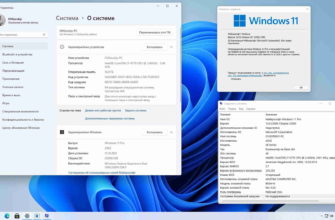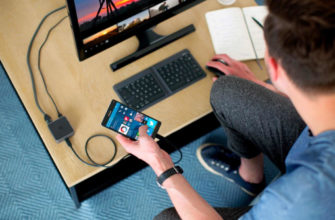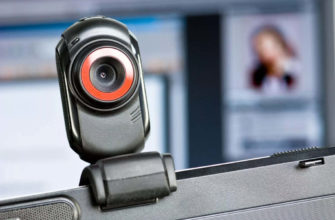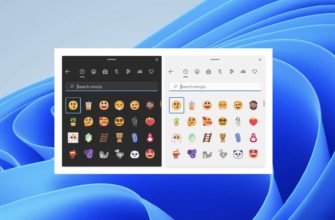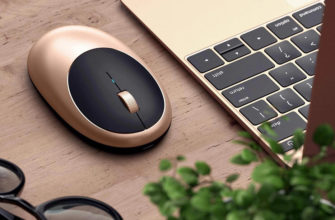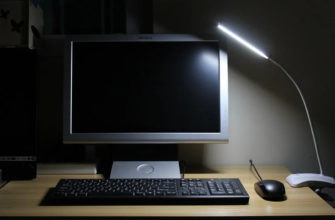FreeDOS is ideal for anyone who wants to play those favorite DOS games. FreeDOS works great on old hardware, and in DOS emulators. Whether you prefer to have a dedicated PC for games, or to run a DOS emulator, FreeDOS will let you run those classic DOS games.
FreeDOS is free because it is released under the GNU General Public License. The GNU license, created by the Free Software Foundation, is the same one used by GNU Emacs and Linux. This means you have access to the source code for all FreeDOS. For more information about FreeDOS, see the FreeDOS Home.
Contents
Setting up your system
In order to play games on DOS, you’ll first need to set up your system. Most games require sound, some use a mouse, and a few need access to a CD-ROM drive. We’ll show you how to set up each of these components under FreeDOS.
Sound support
Back in the day, SoundBlaster was the de facto standard for sound cards. So game developers pretty much wrote games that worked with the SoundBlaster. There were several variants: the SBPro and SB16 seem to have been most popular.
On a dedicated PC, you’ll first need a sound card. Assuming you have one from the era, note that most competing sound cards supported the SoundBlaster. You may have received a driver disk with your sound card. If so, you’ll need to install the drivers according to the instructions that came with the card. Since there are so many sound cards out there, I can’t help you very much with your specific card. Then you’ll need to set the BLASTER variable, below.
Inside a DOS emulator, things are a little easier. Most emulators will “fake” the sound card for you.
Next, you’ll just need to set a variable in AUTOEXEC.BAT that tell the game how your sound card is configured. This is set using the BLASTER variable to define the base address, IRQ, DMA, card type, MIDI port, high DMA, AWE32 port:
Only specify “E” if you have an Creative Labs AWE 32 sound card. This is the address of the wavetable chip in hex (for example, 620.)
The base address is usually 0x220 (just use 220), the IRQ is usually 7 or 5, and DMA is usually 1.
For card type, use this:
| 1 | Sound Blaster version 1.0 or 1.5 and compatibles |
|---|---|
| 2 | Sound Blaster Pro or Pro Compatibles with the SPC-2 chip. |
| 3 | Sound Blaster version 2.0 or compatibles |
| 4 | Sound Blaster Pro or Pro Compatibles with the SPC-3 chip. |
| 5 | Sound Blaster 16 |
| 6 | Sound Blaster 16 ASP |
For example, the Creative Labs AWE 32 sound card:
Or, a SoundBlaster compatible card without music:
If you don’t know a good setting, try the last example. These are the most common values found in sound cards of the era.
You may also want to look at the Wolfenstein 3D technical help, or DOS MAME sound setup.
Mouse support
Looking for mouse support for those DOS games: Mouse
CD-ROM support
Supporting a CD-ROM in DOS is generally a two-step process: you need to load a driver in your CONFIG.SYS, and you need to load an extender to bind the CD-ROM to a drive letter.
On a dedicated PC, you’ll first need a CD-ROM drive. Note that most CD-ROM drives require specific drivers, so you’ll need to install the drivers according to the instructions that came with your CD-ROM drive. There are a lot of drives out there, and I can’t help you very much with your specific hardware.
However, Jeremy Davis is writing a general ATAPI driver that should work with any CD-ROM drive. Use at your own risk. You load it like any other CD-ROM driver, in your CONFIG.SYS file:
The most important option is to specify the device name of the CD-ROM. You’ll need this later. For example, specifying device name of ATAPICDD:
Once you have the CD-ROM driver in your CONFIG.SYS file, you’ll need to load an extender in AUTOEXEC.BAT that binds the device name to a drive letter. Under MS-DOS, you probably used MSCDEX. Under FreeDOS, SHSUCDX is a replacement for MSCDEX. It is considerably smaller than MSCDEX (only 6.5K for one drive) and it provides access to long ISO names.
The basic usage of SHSUCDX is:
Remember the device name we set when we loaded the CD-ROM driver in CONFIG.SYS? You’ll need that here with SHSUCDX. For example, specifying device name of ATAPICDD, add this to your AUTOEXEC.BAT file:
And that should do it. Your CD-ROM should be bound to the next available DOS drive letter (usually D:).
Inside a DOS emulator, it’s easy. Most emulators will load a CD-ROM driver for you, so you should not need to load your own in CONFIG.SYS or AUTOEXEC.BAT. Check that your emulator provides this.
Memory management
On a dedicated PC, you’ll need to add memory management on your own. DOS provides two programs to help you do this: EMM386 and HIMEM (newer: HIMEMX and JEMM386).
EMM386.EXE is a Extended Memory Manager used with Intel 80386 and above processors and allows DOS programs to have access to memory above 640k. FreeDOS EMM386 now (2004) supports VCPI, so even protected mode DOS programs should be happy with it. HIMEM is driver that provides extended memory management. It is most often used with EMM386. Under FreeDOS, this is HIMEM. Most DOS games require access to memory above 640k, so you should add this to your CONFIG.SYS file:
See also FreeDOS Technote #180 for more info on memory management inside DOS.
Inside a DOS emulator, things are a little easier. Most emulators will provide memory management for you, although you may need to specify if you want EMS (the older Expanded Memory) or XMS (the newer Extended Memory). Check your emulator for details.
Putting it all together
You’ve seen the specific examples to set up your system for sound, CD-ROM, and mouse support. Now, let’s put it all together and build a CONFIG.SYS and AUTOEXEC.BAT that should work for you.
Items in green were not discussed here, but you will probably want them anyway:
CONFIG.SYS example
AUTOEXEC.BAT example
Of course, these are just examples; you may need to tweak these according to your specific system.
You can make things a little more flexible by using MENU. Gregory Lumpkin posted his CONFIG and AUTOEXEC, using the MENU feature to make for easy setup. The MENU items are featured in green:
Recently I bought an Asus X201E-KX179D netbook and it has no Windows installed on it, only the BIOS. No DVD Drive, no OS installed.
When I start my netbook, I get three options:
- Load FreeDOS with maximum RAM free using EMM386
- Load FreeDOS including HIMEM XMS-memory driver
- Load FreeDOS without drivers
And I get the option to press:
F5=Bypass startup files
F8=Confirm each line of CONFIG.SYS/AUTOEXEC.BAT
I copied the Windows XP (SP3) .iso image file to my pendrive (Scandisk-8GB) using Rufus and made my USB ready for boot as well.
However, when I insert my USB and enter BIOS setup for changing boot priority, USB Boot is not shown in the boot options, or it is not recognising the USB. When I restart my netbook with the USB inserted, again it goes back to Freedos mode.
Kindly help me to install windows xp (SP3) or Windows 7 (Which is the best option?).
Additional info: USB Ports (Unlocked) in BIOS Setup

2 Answers 2
Use flast boot software to make your USB bootable correctly. Here is link for flash Boot- http://www.prime-expert.com/flashboot/

When I bought my Asus netbook I had the same problem as you. I believe that you have a 64 bit architecture so when you create the USB installation disk you need to make sure you are working on a win 64 bit version.
(I would advise you to install windows 7 on this machine)
Go to command line in an elevated mode to prepare your USB pendrive and type in the following:
— SELECT DISK X (with the list disk command you can determine which disk is our USB device) — CLEAN — CREATE PARTITION PRIMARY — SELECT PARTITION 1 — ACTIVE — FORMAT FS=NTFS — ASSIGN X (Here you can give a letter of your choice to the USB device) — EXIT
After exiting DISKPART you need to insert the Windows installation disk (64bit) into the drive and in CMD type in the following:
- D: (assuming drive D is dvd rom I put D)
- CD BOOT
- BOOTSECT.EXE /NT60 E: (assuming drive E is your USB device)
With this command you just made the USB device Bootable so that next time windows starts up it will be able to boot from the disk itself.
There is one more thing left to do is to copy the windows DVD content onto the USB device. Just copy and paste everything from the Windows 7 64 bit installation disk to the USB.
Leonserion
New Member
Здравствуйте. Сегодня купил новый компьютер. Пришел домой, все подключил. При включении показывается 4 строки (на 4-ю не могу нажать)
Вот эти 4 строки:
1 — Load FreeDOS with EMM386, no EMS (most UMDs), max RAM free
2 — Load FreeDOS with EMM386+EMS and SHARE
3 — Load FreeDOS including HIMEM XMS-memory driver
4 — Load FreeDOS without drivers
Далее:
Select from Menu [123], or press [ENTER] (Selection=1(число меняется от переключения между строками))
Singlesteppinp (F8) is: OFF
Если нажать на одну из этих строк, то появляется C: и надо что-то написать.
====================================
Если с диском Windows — то он его видит и даже начинает читать, но где-то на 40% зависает и пишет, что-то, а в конце код ошибки: 0xc00000e9.
Что делать? Только сегодня купил компьютер.
Процессор: Intel Core i5-3570
Дисковод: ASUS DRW-24B5ST
Жесткий диск: Hitachi HDS721010CLA330
